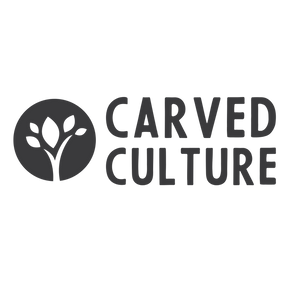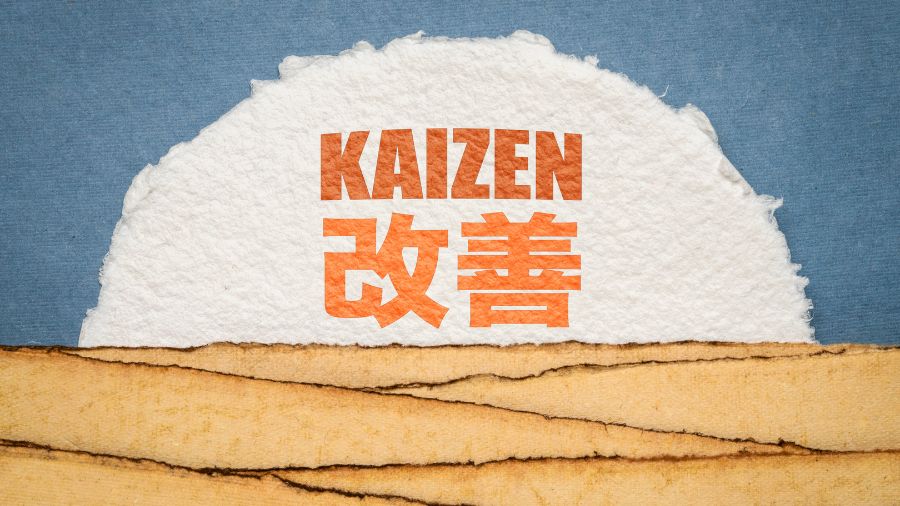In today's rapid-paced world, where everyone is pushing themselves to improve constantly, the art of Kaizen has become a potent instrument for personal and professional development. Derived from Japanese culture, Kaizen is a philosophy that focuses on making minor improvements daily to achieve significant and lasting progress.
The word "Kaizen" itself means "change for the better" or "continuous improvement." It emphasizes the importance of incremental changes that can lead to remarkable transformations over time. This idea has garnered traction across multiple domains, including the business sector, health, and personal development, due to its effectiveness in fostering positive change.
The origins of Kaizen in Japanese culture

Kaizen originated in post-World War II Japan when the country was striving to rebuild its economy. The Japanese philosophy of continuous improvement played a crucial role in their remarkable economic recovery. Masaaki Imai, a Japanese management consultant, first introduced the concept of Kaizen in his book "Kaizen: The Key to Japan's Competitive Success."
In Japanese culture, the spirit of Kaizen is deeply ingrained. It is seen as a way of life rather than just a management technique. The Japanese believe that small, incremental improvements made consistently can lead to significant advancements. This mindset has helped Japan become a global industry leader known for its outstanding quality and efficiency.
Understanding the philosophy behind Kaizen
At the core of the Kaizen philosophy is the belief that every individual, regardless of their role or position, can contribute to the improvement process. It encourages a bottom-up approach, where employees at all levels can identify and implement minor improvements in their daily work.
This mindset encourages an environment of ongoing learning, innovation, and collaboration. Kaizen also emphasises the importance of data-driven decision-making.
Organizations can utilize data collection and analysis to identify areas for improvement and measure the impact of their efforts. Evidence-based methods guarantee that adjustments are grounded in facts rather than assumptions, resulting in more impactful and enduring enhancements.
Benefits of adopting the Kaizen approach

By embracing the art of Kaizen, individuals and organizations can experience many benefits. Firstly, focusing on minor improvements daily promotes a sense of accomplishment, as progress is made consistently. This can enhance motivation and morale, increasing productivity and job satisfaction.
Kaizen also encourages a proactive approach to problem-solving. Organizations can avoid significant setbacks and improve overall efficiency by continuously seeking out and addressing minor issues before they escalate. This continuous improvement mindset can foster a culture of innovation, adaptability, and resilience, enabling organizations to stay competitive in today's rapidly changing business landscape.
Furthermore, Kaizen promotes employee engagement and empowerment. When employees are motivated to share their ideas and suggestions for improvement, they feel valued and invested in the organisations success. This could result in increased employee satisfaction, retention, and loyalty.
How to implement Kaizen in your personal life
Kaizen is the practice of continuous improvement and it isn’t just for the workplace—it can transform your personal life too. Begin with honest self-reflection to pinpoint areas you’d like to improve, whether in health, relationships, or personal development. Set small, achievable goals and break big ambitions into manageable steps to prevent overwhelm.
Build these changes into your daily routine, allowing consistency to turn them into habits. Track your progress with tools like journals or apps, and reflect regularly to identify what’s working. Most importantly, celebrate each small win—positive reinforcement keeps momentum strong. By applying Kaizen daily, you’ll foster steady growth, fulfillment, and long-term happiness.
Applying Kaizen in the workplace

Kaizen boosts workplace productivity by creating a culture of continuous improvement that sparks innovation and engagement. To apply it, empower employees to suggest and make small improvements, providing tools and support.
Set clear goals and metrics aligned with company objectives to track progress. Encourage collaboration across teams to share ideas and find solutions. Offer training to build Kaizen skills, and regularly review processes using employee feedback and data to refine them. This approach fosters a motivated workforce focused on lasting excellence and success.
The role of minor improvements in achieving big goals
The concept of Kaizen highlights the power of minor improvements in achieving significant goals. It recognizes that major transformations are often the result of a series of small, incremental changes made consistently over time. Individuals and organizations can progress towards their larger objectives by focusing on minor improvements daily.
Minor improvements are more manageable and less intimidating than large-scale changes. They allow for experimentation, learning, and adjustment along the way. Additionally, minor improvements build momentum and create a positive feedback loop. Each small success motivates and inspires further action, leading to a continuous improvement cycle.
Furthermore, minor improvements address issues at their root cause rather than merely treating the symptoms. By identifying and addressing minor problems early on, organizations can stop them from developing into more significant, complex issues. This proactive approach helps to maintain stability, minimize disruptions, and optimize performance.
Examples of successful businesses that have adopted Kaizen
Many successful businesses worldwide have adopted the principles of Kaizen and reaped the benefits of continuous improvement. One notable example is Toyota, the Japanese automobile manufacturer.
The production system developed by Toyota, commonly referred to as the Toyota Production System (TPS), is built on the foundations of Kaizen.
By empowering employees to contribute to improvement efforts and consistently implement small changes, Toyota has become renowned for its high-quality, efficient, and reliable vehicles.
Another example is Amazon, the global e-commerce giant. Amazon has ingrained the spirit of Kaizen in its culture, continually striving to enhance its customer experience, operational efficiency, and innovation. Through its obsession with customer satisfaction and its relentless pursuit of improvement, Amazon has become one of the most successful companies in the world.
These examples demonstrate the transformative power of Kaizen when applied effectively. By embracing the philosophy of continuous improvement, businesses can achieve excellence, differentiate themselves from competitors, and adapt to evolving market demands.
Resources and tools for practising the art of Kaizen
To practice Kaizen effectively, several key resources can help. Books like Kaizen: The Key to Japan's Competitive Success and The Kaizen Way offer deep insights and practical advice. Online courses from platforms such as Udemy and Coursera provide structured learning and useful tools.
Participating in Kaizen events or workshops gives hands-on experience through exercises and group discussions. Additionally, software tools like KaiNexus, Trello, and LeanKit simplify data tracking and help identify improvement opportunities. Using these resources makes applying Kaizen easier and more effective for continuous growth.
Continuous improvement through Kaizen
The art of Kaizen offers a powerful approach to continuous personal and professional improvement. Individuals and organizations can achieve remarkable progress and unlock their full potential by making minor improvements daily. It is a philosophy that encourages a proactive mindset, fosters collaboration, and promotes a culture of innovation and excellence.
By understanding the origins and philosophy of Kaizen, adopting its principles, and utilizing the available resources and tools, anyone can take the art of Kaizen and experience the transformative power of continuous improvement.
Art of Kaizen (Frequently Asked Questions)
Can Kaizen be applied to any industry or field?
Yes, Kaizen can be applied to any industry or field. The principles of continuous improvement are universal and can be customized to meet different sectors' unique requirements and obstacles.
How long does it take to see the results of Kaizen?
The timeframe for seeing the results of Kaizen can vary depending on various factors, such as the complexity of the improvement, the level of implementation, and the organization's culture. However, minor improvements made consistently over time can lead to significant and lasting results.
Is Kaizen a one-time process, or is it ongoing?
Kaizen is an ongoing process. It is not a one-time event or project but a continuous improvement journey. The philosophy of Kaizen emphasizes the importance of making minor improvements daily and fostering a culture of constant learning and innovation.
Can Kaizen be implemented at an individual level?
Absolutely. The principles of Kaizen can be applied at an individual level to enhance personal growth and achieve personal goals. By making minor improvements daily and embracing a continuous improvement mindset, individuals can experience positive transformations in various aspects of their lives.
What are some common challenges in implementing Kaizen?
Some common challenges in implementing Kaizen include reluctance to change, limited employee involvement, and difficulty sustaining the momentum of improvement efforts. However, organizations can overcome these obstacles and achieve successful implementation by addressing these challenges through effective communication, leadership support, and fostering a culture of empowerment.
Can Kaizen be combined with other improvement methodologies?
Kaizen can be combined with other enhancement methods, like Lean Six Sigma or Agile frameworks. These methodologies complement each other and can be integrated to achieve even more excellent results. The key is to adapt and customize the approaches to suit the organisation's specific needs and context.












